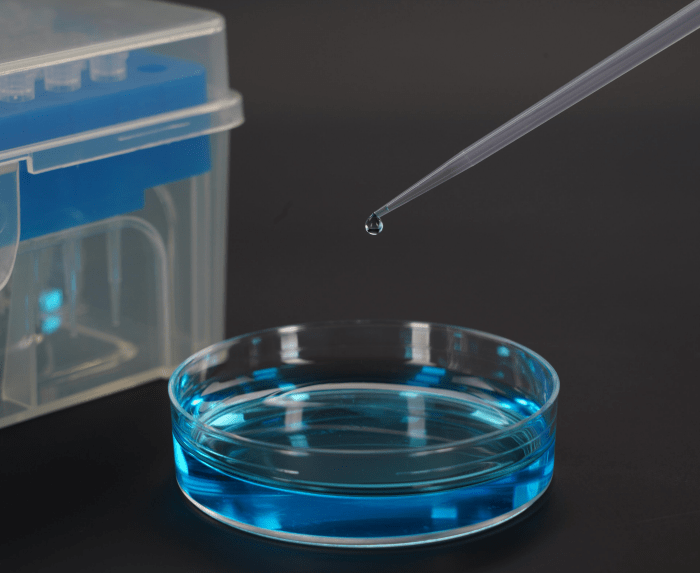What Are the Best Practices for Pipetting Viscous Liquids?

Viscous liquids have a high viscosity and a tendency to stick to surfaces, which makes pipetting them difficult. On the other hand, accurate pipetting of viscous liquids is achievable with the right technique and pipette tip selection. When pipetting viscous liquids, follow these recommended procedures:
l Use wide-bore pipette tips: Viscose liquids can pass into and out of wide-bore pipette tips more readily because of their larger internal diameter. This can lessen the quantity of liquid left in the tip after pipetting and help to increase accuracy.
l Pre-wet the pipette tip: The amount of liquid that sticks to the inside of the pipette tip can be decreased by pre-wetting the tip with a tiny amount of the viscous liquid. This can decrease the possibility of air bubbles forming in the tip and increase accuracy.
l Use a slow pipetting speed: One important tip for pipetting viscous liquids is to start slowly. This will help to avoid the formation of air bubbles and give the liquid more time to flow into and out of the tip.
l Use reverse pipetting: One method for increasing the accuracy of pipetting viscous liquids is reverse pipetting. First, fill the tip of the pipette with the desired amount of liquid to reverse it. After that, carefully return a tiny amount of liquid to the reservoir. When you expel the liquid, the vacuum created in the tip will help pull the remaining liquid out.
l Touch the pipette tip to the side of the vessel: To remove any leftover liquid, touch the tip of the pipette to the vessel's side after expelling the liquid. By doing this, you can make sure that the right amount of liquid is being dispensed.
l Change pipette tips frequently: Frequently changing pipette tips is crucial when pipetting viscous liquids. This is because viscous liquids may stick to the inside of the tip and compromise pipetting accuracy.
l Use a positive displacement pipette: Use of a positive displacement pipette may be warranted when pipetting very viscous liquids. For viscous liquids, positive displacement pipettes are more accurate than air displacement pipettes because they dispense liquid using a plunger.
l Calibrate your pipette: To make sure that your pipette is dispensing the right amount of liquid, it is crucial to calibrate it regularly. This is crucial when pipetting viscous liquids in particular.
You can pipette viscous liquids with more accuracy and precision if you adhere to these best practices.
- Art
- Causes
- Crafts
- Dance
- Drinks
- Film
- Fitness
- Food
- Games
- Gardening
- Health
- Home
- Literature
- Music
- Networking
- Other
- Party
- Religion
- Shopping
- Sports
- Theater
- Wellness


